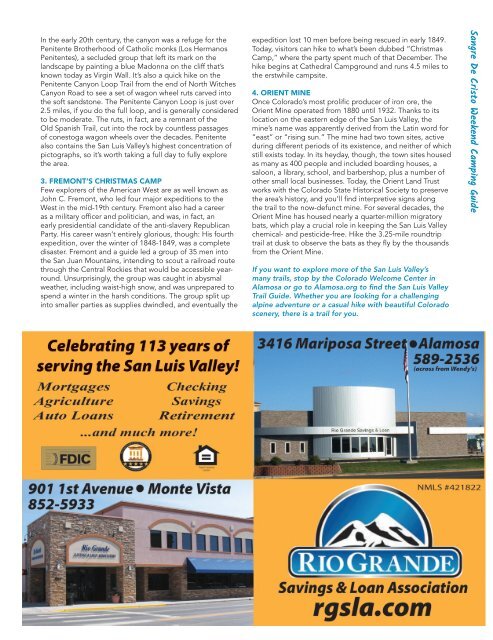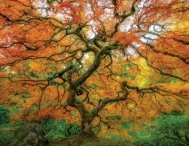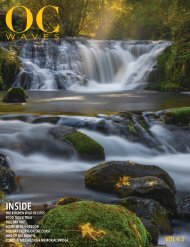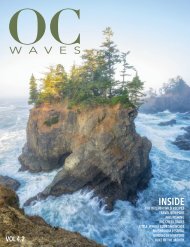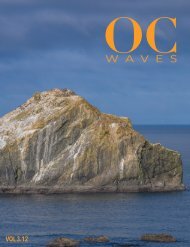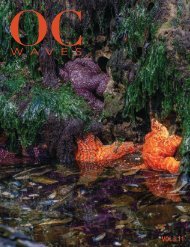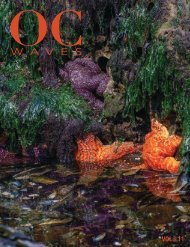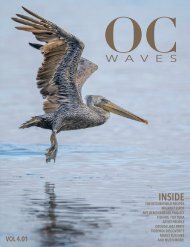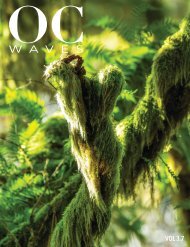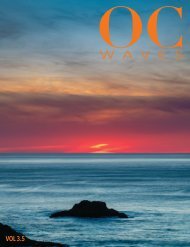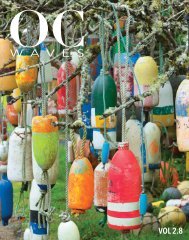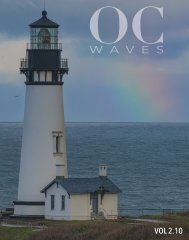Create successful ePaper yourself
Turn your PDF publications into a flip-book with our unique Google optimized e-Paper software.
In the early 20th century, the canyon was a refuge for the<br />
Penitente Brotherhood of Catholic monks (Los Hermanos<br />
Penitentes), a secluded group that left its mark on the<br />
landscape by painting a blue Madonna on the cliff that’s<br />
known today as Virgin Wall. It’s also a quick hike on the<br />
Penitente Canyon Loop Trail from the end of North Witches<br />
Canyon Road to see a set of wagon wheel ruts carved into<br />
the soft sandstone. The Penitente Canyon Loop is just over<br />
2.5 miles, if you do the full loop, and is generally considered<br />
to be moderate. The ruts, in fact, are a remnant of the<br />
Old Spanish Trail, cut into the rock by countless passages<br />
of conestoga wagon wheels over the decades. Penitente<br />
also contains the San Luis Valley’s highest concentration of<br />
pictographs, so it’s worth taking a full day to fully explore<br />
the area.<br />
3. FREMONT’S CHRISTMAS CAMP<br />
Few explorers of the American West are as well known as<br />
John C. Fremont, who led four major expeditions to the<br />
West in the mid-19th century. Fremont also had a career<br />
as a military officer and politician, and was, in fact, an<br />
early presidential candidate of the anti-slavery Republican<br />
Party. His career wasn’t entirely glorious, though: His fourth<br />
expedition, over the winter of 1848-1849, was a complete<br />
disaster. Fremont and a guide led a group of 35 men into<br />
the San Juan Mountains, intending to scout a railroad route<br />
through the Central Rockies that would be accessible yearround.<br />
Unsurprisingly, the group was caught in abysmal<br />
weather, including waist-high snow, and was unprepared to<br />
spend a winter in the harsh conditions. The group split up<br />
into smaller parties as supplies dwindled, and eventually the<br />
expedition lost 10 men before being rescued in early 1849.<br />
Today, visitors can hike to what’s been dubbed “Christmas<br />
Camp,” where the party spent much of that December. The<br />
hike begins at Cathedral Campground and runs 4.5 miles to<br />
the erstwhile campsite.<br />
4. ORIENT MINE<br />
Once Colorado’s most prolific producer of iron ore, the<br />
Orient Mine operated from 1880 until 1932. Thanks to its<br />
location on the eastern edge of the San Luis Valley, the<br />
mine’s name was apparently derived from the Latin word for<br />
“east” or “rising sun.” The mine had two town sites, active<br />
during different periods of its existence, and neither of which<br />
still exists today. In its heyday, though, the town sites housed<br />
as many as 400 people and included boarding houses, a<br />
saloon, a library, school, and barbershop, plus a number of<br />
other small local businesses. Today, the Orient Land Trust<br />
works with the Colorado State Historical Society to preserve<br />
the area’s history, and you’ll find interpretive signs along<br />
the trail to the now-defunct mine. For several decades, the<br />
Orient Mine has housed nearly a quarter-million migratory<br />
bats, which play a crucial role in keeping the San Luis Valley<br />
chemical- and pesticide-free. Hike the 3.25-mile roundtrip<br />
trail at dusk to observe the bats as they fly by the thousands<br />
from the Orient Mine.<br />
If you want to explore more of the San Luis Valley’s<br />
many trails, stop by the Colorado Welcome Center in<br />
<strong>Alamosa</strong> or go to <strong>Alamosa</strong>.org to find the San Luis Valley<br />
Trail Guide. Whether you are looking for a challenging<br />
alpine adventure or a casual hike with beautiful Colorado<br />
scenery, there is a trail for you.<br />
Sangre De Cristo Weekend Camping Guide


